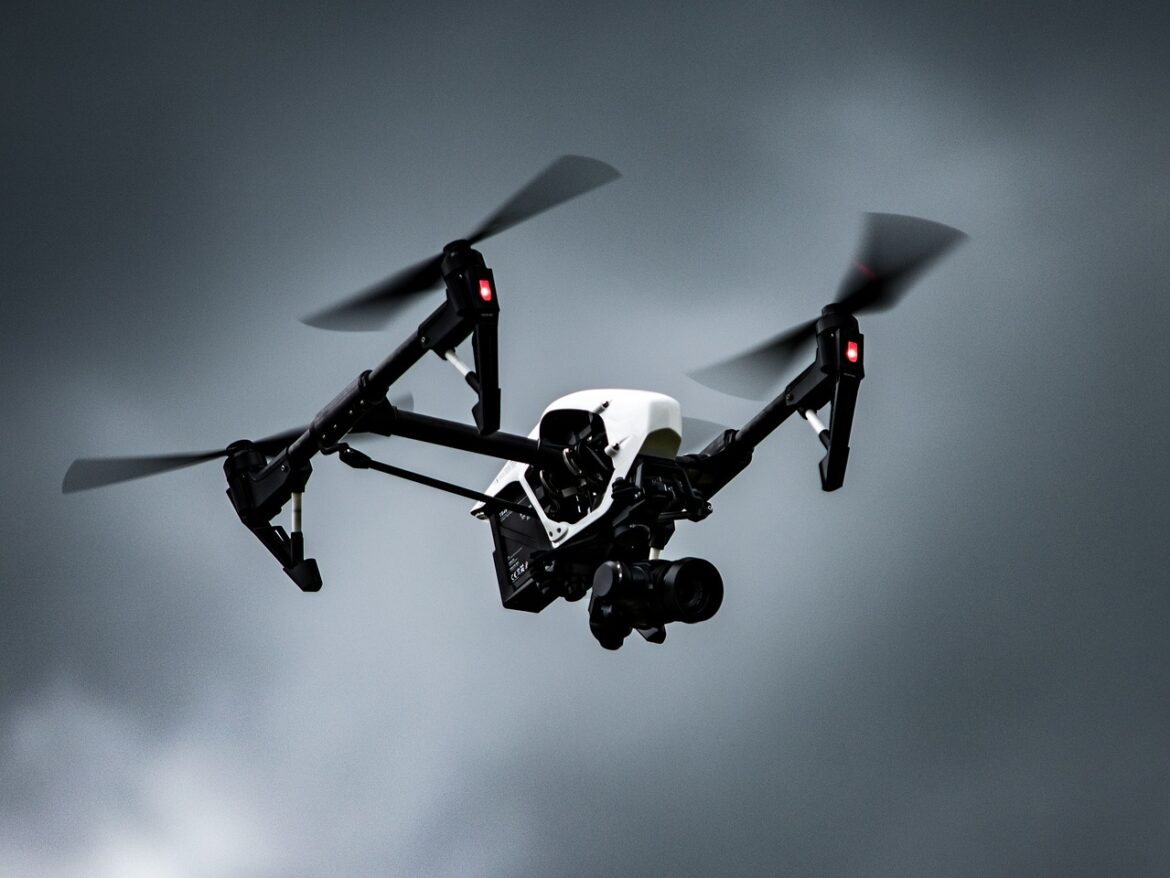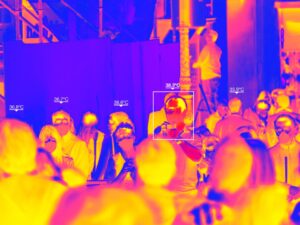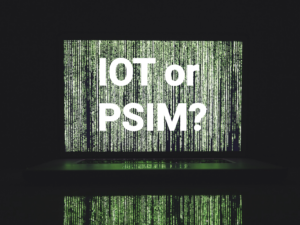
Numerous options for drone defense
Buying drones is easy, but defending against unmanned flying objects is much more complex. This article informs about different methods of detection, tracking and defense against drones.
 The increasing demand for drone defense technology is closely linked to the high sales figures of drones. Operators of critical infrastructures, correctional facilities, airports or the police are already dealing with the new type of threat from above.
The increasing demand for drone defense technology is closely linked to the high sales figures of drones. Operators of critical infrastructures, correctional facilities, airports or the police are already dealing with the new type of threat from above.
Detect, identify and track drones
Drones reach speeds of up to 100 Km/h and can easily be mistaken for birds due to their high speed and flight dynamics. Accordingly, reliably detecting and tracking unmanned aerial vehicles (UAV’s) is a technical challenge.
For reliable detection, identification and tracking of drones, a combination of proven military technology (radar, electro-optical, infrared) from air defense with newly developed defensive measures (radio frequency, acoustic detection) is often used.
Radar
The presence of small unmanned aircraft is detected by their radar signature. This is generated when the aircraft encounters radio frequency pulses emitted by a detection element. Radar systems often use algorithms to distinguish between drones and other small, low-flying objects, such as birds.
Hensoldt and Rheinmetal Defence are established manufacturers of radar technology used by the military but also in civilian drone detection.
Radio Frequence (RF)
Special sensors monitor a defined airspace and detect and locate drones entering this area. The received radio signals between drones and drone operators are matched with the drone database and allow the determination of the drone type.
Most drones can be detected based on the frequencies and sent back to the point of origin. There are several providers of radio frequency detection such as Swisscom, Detect-Inc or DeDrone.
Elekctro-optical (EO)
With electro-optical ranging, drones can be identified and tracked based on their visual signature.
Infrared (IR)
Based on their heat signature, drones can be identified and tracked.
Acoustic sensors
Drones produce a distinctive noise profile during flight. Acoustic systems recognize drones by their engine noise and compare them with the existing noise library.
combined sensors
Many systems integrate multiple different types of sensors to enable more reliable detection, identification and tracking of drones.
This will take drones from the sky
Many different measures have already been developed to eliminate drones. Some can only be used by the military (projectiles, lasers), for others there are special permits (jammers) and still others can be used without restrictions (e.g. net guns).

Jammers are prohibited in Switzerland. In the Telecommunications Act in Art. 32b FMG, exceptions are expressly provided for the use of jammers for prisons and police authorities. However, these must be approved by the Federal Office of Communications. An important criteria for the use of jamming technology is the complete control over the flight behavior of the drone, during the interception process. Here you can find an overview of the different defense technologies.
Radio frequency jammer
RF jamming disrupts the radio link between the drone and its operator by generating large amounts of RF interference. Once the RF link, which can include WiFi links, is broken, a drone will typically either descend to the ground or initiate a “return to home” maneuver.
GNSS jammer
GNSS jamming disrupts the drone’s satellite link, such as GPS or GLONASS, which is used for navigation. Drones that lose their satellite connection usually hover in place, land or fly back to the starting point.
Spoofing
Spoofing Allows you to take control of or misdirect the targeted drone by feeding it a false communication or navigation link.
Dazzling
Dazzling uses a high-intensity light beam or laser to blind a drone’s camera.
Laser
The laser uses directed energy to destroy the drone’s vital segments and send it crashing to the ground.
Example: Rheinmetal Defense has developed a high-energy laser and integrates it into the ground air defense system.
High Power Microwave
Direct pulses of high-intensity microwave energy directed at the drone disabled the drone’s electronic control system.
Nets
Nets are shot at drones, which then become entangled in the rotors and bring them down.
Projectiles
Specially designed or regular air defense projectiles destroy the drone.
Interceptor drone
A powerful interceptor drone is designed to fly into the enemy drone and bring you down. There is also a concept where the interceptor drone shoots a net at the invading drone.
combined elements
A number of drone defense systems (C-UAS systems) combine various elements to increase the likelihood of successfully defending airspace. For example, many jamming systems use RF and GNSS jammers in a single package. Other systems may use an electronic system as the first line of defense and a kinetic system as a backup measure.
Mobile or stationary drone defense
A distinction is made between mobile and stationary ground-based stations, handheld and drone-based defense methods.
bodengebunden: fest
The systems are designed to be deployed from stationary positions on the ground.
Ex. Stationary jammers mounted on a tower.
groundbased: mobil
The systems are designed to be used by mounted on vehicles and in motion.
Ex. Mobile radar systems with integrated RF/GNSS jammer.
hand-held
Systems designed to be operated by hand by a single person. Many of these systems resemble rifles or other small arms.
Drone based
The technique is simple: a net on is shot at the drone, this gets tangled in rotors and brings the drone down.
Can the drone defense system be integrated into the PSIM?
Yes, that is of course possible. It also makes perfect sense. Especially if the security personnel e.g. of prisons must prevent smuggling of drugs or weapons.
We are happy to advise you by phone or mail. Click here to go to the contact form.
How is your airspace secured against drones?
Do you want to take drones out of the sky as soon as one enters your airspace? Or is it enough to inform you about the presence of such uninvited visitors?




